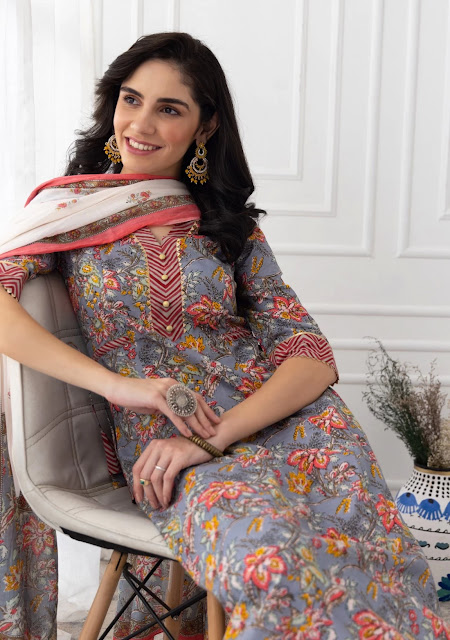The Punjabi juttis for ladies: A symbol of tradition, Culture and Fashion
Punjabi jutti for ladies can be traced back to the Mughal Empire around 200 BC. In the last several years, Jutti's has gone from being a simple pair of footwear to an ethical must-have. It covers the front of the feet in a circular or M-shaped design. This was a common choice among royals but with time it became a daily affair for women of all classes.
Comparison: Punjabi juttis Vs. Mojaris
Both the Juttis and Mojris originated in Northern India. These Juttis were worn by Rajput women, whereas Mojaris were worn by Rajputi men. There is something delicate and feminine about a pair of juttis. When compared to Mojaris, they're huge, strong, and very macho. In contrast to Juttis, Mojaris feature a curled front edge known as a Nokh or toe, which gives them their name. Juttis and Mojaris are known for their trademark designs, which frequently feature a curving raised design.
The Punjabi Juttis for ladies
It was the Punjabi artisans who, followed the Mughals, created this essential and multipurpose footwear item. Exotic needlework and ornaments adorn these juttis, which were originally made of pure leather. Zamindars, nawabs, Maharajas, and Maharanis no longer wear this juttis. These Punjabi juttis have a curled front and an upturned toe look. Real gold and silver were used to embellish the Juttis around 200BC, which were made to match the Queen's robe. It's intriguing to learn that the queens of that era were so meticulous about their shoes' colour matching.
How these traditional Punjabi juttis are made?
How many types of Punjabi Juttis are there?
Printed Juttis: It is possible to use this juttis with both denim and more formal clothing, making them a versatile choice for both. Bridal outfits can be complemented with a wide range of prints, colours, florals, multicoloured or black and white printed juttis.
Mirror work Juttis: The art of making mirrors with glass dates back to the 17th century. It's possible to buy a machine-cut glass shisha with a silvered backing that comes in shapes such as a hexagon, triangle, square, or circle. The juttis are attractive and go well with a variety of ethical attire. Embroidery, either dabka work or colourful threads, is incorporated into the silver mirror work.
Ghungroo Juttis: Ghungroo is the string of little bells that adorns the jutti. Ghungroo is a mystical anklet placed above the ankle that produces a sound resembling bells at its base. Complex footwork can be heard clearly because of its role in accentuating rhythm. Footwear with a festive ambience and sound was the goal.
Comparison: Punjabi juttis Vs. Mojaris
Both the Juttis and Mojris originated in Northern India. These Juttis were worn by Rajput women, whereas Mojaris were worn by Rajputi men. There is something delicate and feminine about a pair of juttis. When compared to Mojaris, they're huge, strong, and very macho. In contrast to Juttis, Mojaris feature a curled front edge known as a Nokh or toe, which gives them their name. Juttis and Mojaris are known for their trademark designs, which frequently feature a curving raised design.
The Punjabi Juttis for ladies
It was the Punjabi artisans who, followed the Mughals, created this essential and multipurpose footwear item. Exotic needlework and ornaments adorn these juttis, which were originally made of pure leather. Zamindars, nawabs, Maharajas, and Maharanis no longer wear this juttis. These Punjabi juttis have a curled front and an upturned toe look. Real gold and silver were used to embellish the Juttis around 200BC, which were made to match the Queen's robe. It's intriguing to learn that the queens of that era were so meticulous about their shoes' colour matching.
How these traditional Punjabi juttis are made?
- Vegetable tanning is the first step in processing raw hides.
- Tannin, a chemical derived from the Kikkar tree, is employed in the same way for the same purpose as described above.
- To make juttis, the processed leather is split up into several pieces.
- The upper of the shoe, can be made of leather or cloth and adorned with brass nails that are embroidered. Shells, mirrors, bells, and ceramic beads are among the other festoons
- The shoe is put together and finished by a skilled craftsman. Punjab's capital city, Patiala, is home to India's largest jutti market. There's no end to the variety available.
How many types of Punjabi Juttis are there?
Printed Juttis: It is possible to use this juttis with both denim and more formal clothing, making them a versatile choice for both. Bridal outfits can be complemented with a wide range of prints, colours, florals, multicoloured or black and white printed juttis.
Mirror work Juttis: The art of making mirrors with glass dates back to the 17th century. It's possible to buy a machine-cut glass shisha with a silvered backing that comes in shapes such as a hexagon, triangle, square, or circle. The juttis are attractive and go well with a variety of ethical attire. Embroidery, either dabka work or colourful threads, is incorporated into the silver mirror work.
Ghungroo Juttis: Ghungroo is the string of little bells that adorns the jutti. Ghungroo is a mystical anklet placed above the ankle that produces a sound resembling bells at its base. Complex footwork can be heard clearly because of its role in accentuating rhythm. Footwear with a festive ambience and sound was the goal.






Comments
Post a Comment